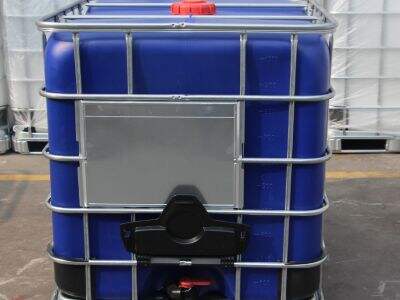Derksen is a manufacturer, producing safe and quality equipment for chemical, pharma and bio technologies. Safety is always at the forefront of our mind, particularly when dealing with IBC tanks. They are utilized to contain and transport a variety of liquids, and caring for them in an appropriate manner is extremely important to avoid costly accidents and workplace safety issues, including being non-compliant with OSHA regulations. As such, we will share OSHA safety tips that when applied properly working ibc tanks everyone stays safe on the job.
Guidelines for the safe handling of IBC tanks
IBC tanks, also called intermediate bulk containers, can be large or small use for transporting and storing of liquids. Below are a few required steps to safely handle these tanks. Some precautions to follow when dealing with ibc containers:
All the vulnerable places are also inspected before using to prevent other damages and leaks.
Wear protective and when handling ibc tank.
Latch the transport tank you’re using to prevent it from laying over.
When transporting IBC tanks make use of correct lifting procedures to avoid any injuries.
Keep IBC tanks in a dry, enclosed space out of direct sunlight and away from heaters.
These are simple things, however they can help you make sure IBC containers are being used in a safe manner and keep those workplace accidents at bay.
Steps for Avoiding Mishaps with IBC Tanks
Shit can go wrong when you’re working with IBC tanks and if you don’t take the appropriate precautions. To avoid accidents take these precautions:
Refrain from piling IBC tanks on top of one another, to prevent them falling over.
Damaged or leaking IBC tanks should not be used as they may present safety risks.
Dragging IBC tanks on the ground may result in damage to the tank and spills.
Don not smoke around the IBC tank nor be exposed to an open flame as they may contain flammable liquids.
Do not work under a raised IBC container in case it falls on you.
By taking these precautions employers can ensure safe work practices when working with IBC tanks.
IBC Tank Safety: Risks and Requirements IBC containers. The appropriate safety guidelines are required accordingly to Take all the necessary safety precautions in dealing with your tanks.
IBC Tanks Safety Precautions: It is important to observe safety precautions when working with IBC tanks. Here are some safety tips to keep in mind:
Delivery staff should be trained concerning how to move IBC tanks, so that your employees know all safety measures.
Keep a clutter-free work area to avoid tripping and falling.
Obey all manufacturer guidelines and instructions when using, handling, and storing IBC tanks to maintain safety.
Have emergency spill kits on hand for spills and leaks from IBC tanks.
Examine intermediary bulk containers frequently so you can catch any potential problems or damage before they threaten safety.
You can ensure a safe working environment for handling IBC tanks by adhering to these safety rules.
Tips for Ensuring IBC Tank Safety in the Workplace
In the workplace, promoting safety operations for IBC tank is good if we follow best practices that favor safe keep. Here are a few tips for IBC tank safety:
Establish an operational plan operational (as part of your safety system) handling, storing and transportation or "Disposal" of Drums/IBC.
Specialised safety training for workers so that they are familiar with the correct procedures.
To avoid spreading spills and getting them down bothersome grates, you can catch leaks with spill containment pallets or trays.
Always examine IBC totes for wear and tear or damage that could impact safety.
Prompt report of safety concern and IBC tank issue by employees.
Observing these protocols can help keep the job site safe and prevent accidents when using IBC tanks.
Key IBC Containers Safety Practices
With the safe transportation of IBC tanks, safety is even more important as you want to avoid any accidents or staff injuries. Knowing the dimension and weight requirements for specific types of IBCs is essential when looking at storage options. Below are some risk-reducing precautions to take when dealing with IBC containers:
Always use proper PPE (Personal Protective Equipment) such as gloves, goggles and protective clothing when using an IBC.
Lift and transport heavy IBC tanks with forklifts, pallet jacks and other equipment to avoid strain injuries.
IBC tanks should be fastened down while in transport to avoid sliding or tipping.
To minimize accidents, keep IBC tanks in a separate area from traffic and other potential hazards.
Adhere to all OSHA laws and regulations by following safety guidelines, procedures, and permits; maintain a clean work environment.
If you adhere to these key safety precautions you will stay safe both for yourself and your colleagues, while using Intermediate Bulk Container tanks and have a better working environment as well.
When IBC tanks are being worked on, caution must be taken and safety measures followed in order to avoid accidents and injuries. Why it’s important to practice OSHA safety tips, precautions, guidelines, best practices and safe handling when dealing with IBC tanks Let's face it. Before you get started, it's important to ensure safety in the workplace - so you and your coworkers avoid injury while using drumming equipment. Remain safe and informed, and keep practicing proper safety techniques when working with IBC tanks to maintain a reputable work environment.

